Using X-CTU to read settings of an XBee
This page describes how to use X-CTU to read settings on an XBee.
| minibee | hardware | minibee | battery | coordinator | expansion | xbee |
| tags |
Getting X-CTU
X-CTU is free software from Digi that allows you to configure the XBees. The software is written in Java and is crossplatform, so it can be used on Windows, OSX and Linux.
Use this direct link to get to the X-CTU page. In case the direct link does not work, search on the website of Digi for the software in the search field with the keyword X-CTU.
Click on the Download link on the website to get the software.
Opening the radio in X-CTU
When you start the X-CTU software, you will see the following screen:
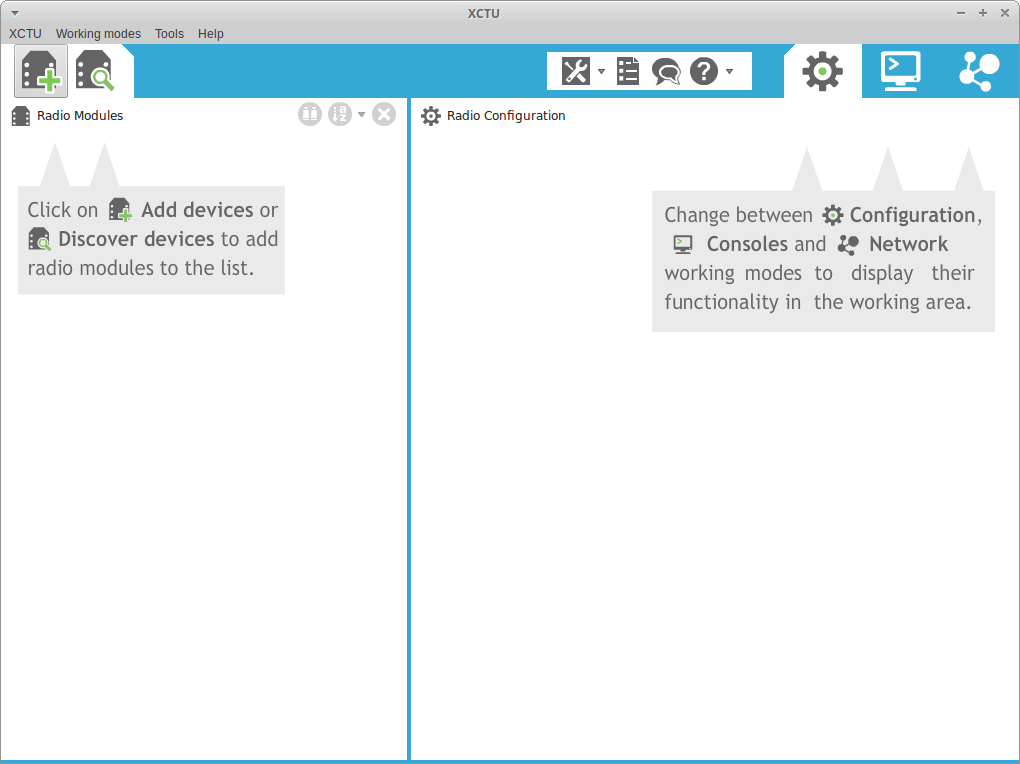
Selecting the radio
Click on the Add devices button in the upper left corner to add a new device. You will get the following dialog:
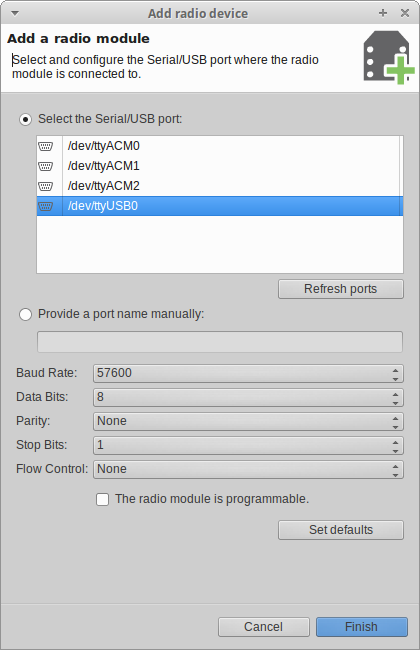
Note: you have to have your coordinator board with an XBee on top connected to your computer right now! If you plug it in when the dialog is already open, click on the button
Refresh ports.
From the top half, select the Serial/USB port you want to use. On Linux, this should be something like /dev/ttyUSB0, on OSX something like /dev/tty.usbserialAACC123, on Windows something like COM3.
In the lower half of the dialog, you may want to change the baudrate. If the XBee has not been configured before (i.e. if you did not buy it together with a MiniBee), select 9600. If the XBee has been used with the Sense/Stage MiniBee before (or bought with a Sense/Stage MiniBee), then select 57600.
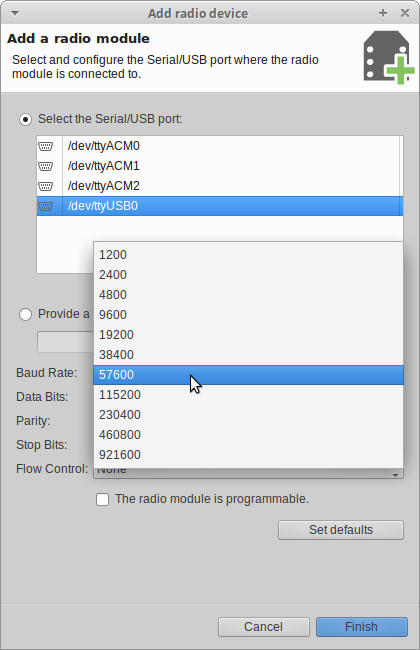
After selecting the USB port and checking the baudrate setting, click on the Finish button in the lower right corner. You will now get the following screen:

In rare occasions, it cannot find the radio and asks you to reset the radio:
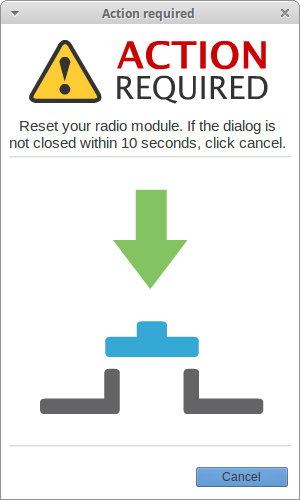
If this dialog shows up, push the button on the coordinator board that is at the edge under the XBee radio.
Once the radio has been found, you will see the following screen:
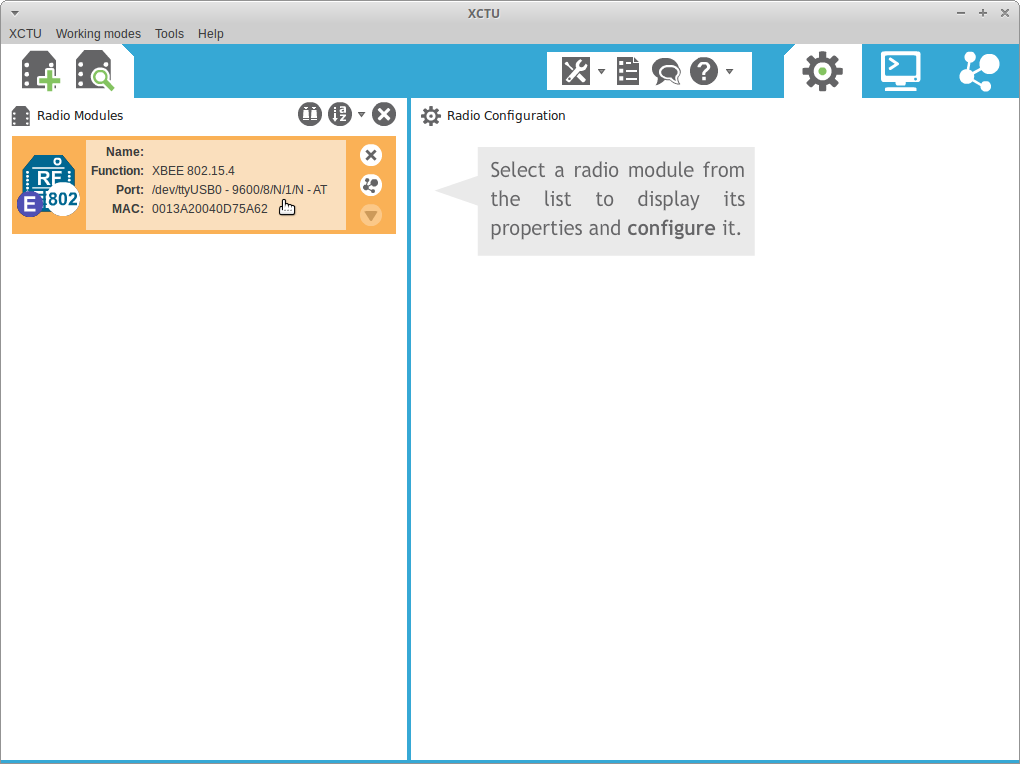
Click on the radio to see its configuration. You will get a popup screen telling you that it is updating the user interface and reading the radio settings:

After that, it will show a list of settings in the right half of the screen.
Read settings of an XBee with X-CTU
Once you have selected the radio to view its configuration, you will see the following screen:

The settings you most likely want to check are the Channel (CH), pan id (ID) and power level (PL).
Related pages:
| minibee | hardware | minibee | battery | coordinator | expansion | xbee |
| tags |
| page created on: | last changed on: |
|---|---|
| 6 February 2018 | 6 February 2018 |
